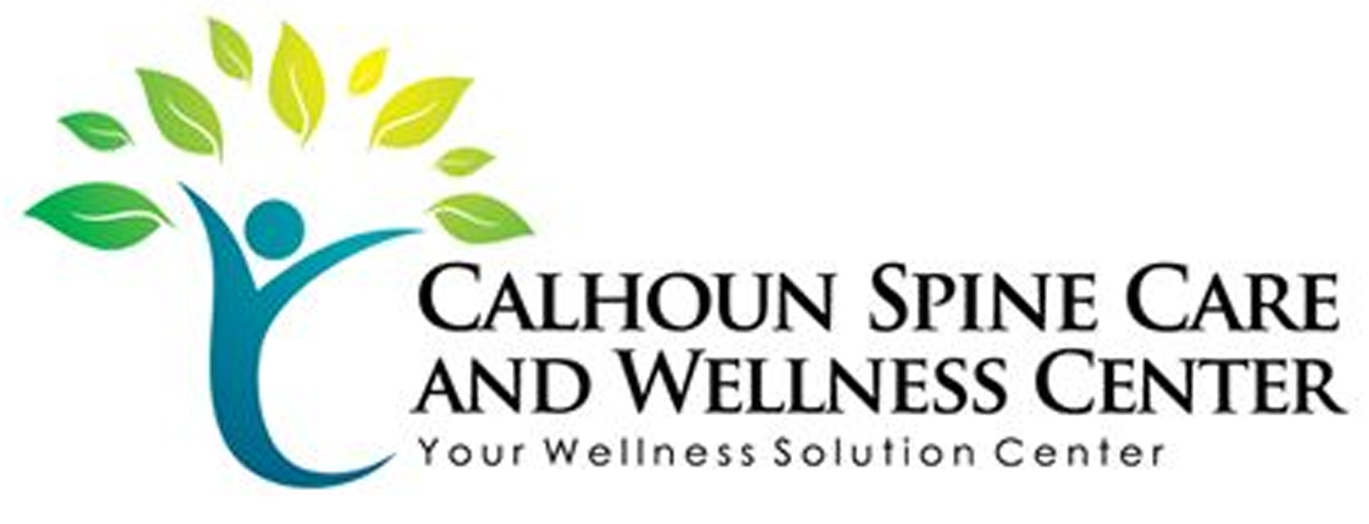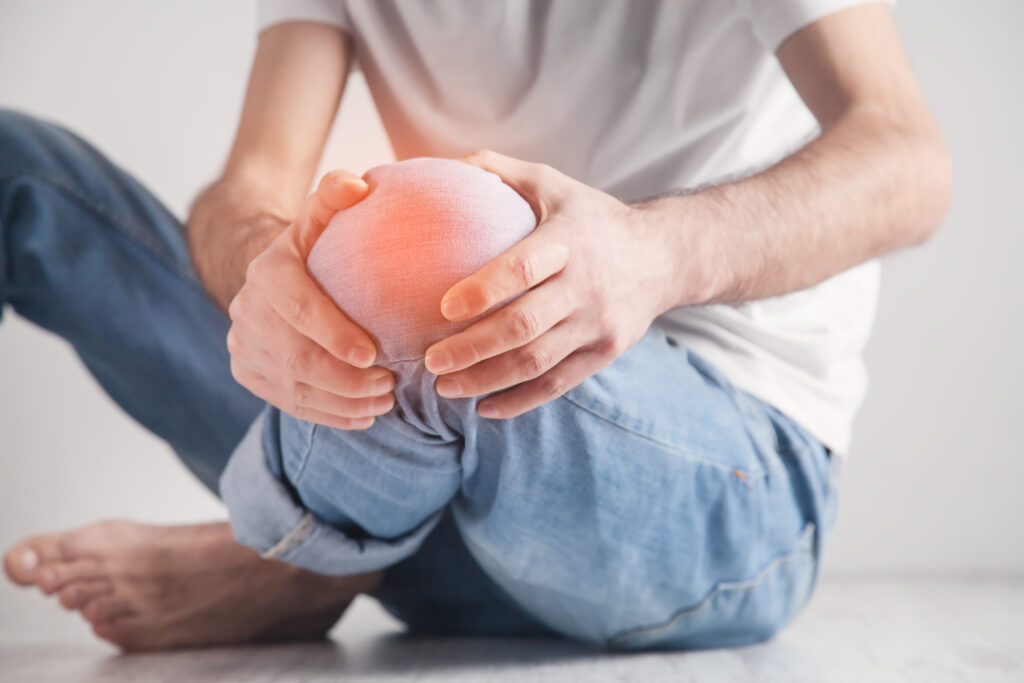If you're dealing with back pain in Calhoun, you might be wondering about the best relief strategies available to you. From physical therapy to acupuncture, there are numerous options that can help alleviate your discomfort and improve your mobility. You may also find that lifestyle modifications and community resources play a significant role in your recovery. But what specific approaches have proven most effective for residents like you? Understanding these strategies could be the key to managing your pain more effectively.
Understanding Back Pain
Many people experience back pain at some point in their lives, often wondering about its causes and effects. Understanding back pain is vital for you to find effective relief strategies. Back pain can stem from various factors, including muscle strain, poor posture, and underlying health conditions. You might notice that activities like lifting heavy objects or sitting for extended periods can trigger discomfort.
In many cases, the pain can be classified as acute or chronic. Acute back pain typically lasts for a short duration, often resulting from an injury or sudden movement. On the other hand, chronic back pain persists for three months or longer, and it can greatly affect your daily life. Recognizing the difference can help you identify when to seek further evaluation.
Physical factors play a considerable role in back pain. Your body mechanics, such as how you walk or lift objects, may contribute to strain on your back. Additionally, weight, age, and physical fitness levels can impact your spine's health.
Stress and emotional factors can also manifest as physical pain, leading to muscle tension and discomfort.
It's essential to pay attention to your body's signals. If you've been feeling consistent pain, consider how your activities and lifestyle choices might be influencing your condition. By understanding the underlying causes of your back pain, you can take proactive steps toward alleviating it, paving the way for a healthier, more comfortable life.
Importance of Seeking Help
Ignoring persistent back pain can lead to more significant issues down the line. You might think you can tough it out or that the pain will eventually go away, but that's often not the case. When you ignore the signals your body is sending, you risk worsening your condition, which could lead to chronic pain or even permanent damage.
It's easy to dismiss back pain as just a part of life, but seeking help can make a world of difference. When you consult a healthcare professional, you gain valuable insights into the underlying causes of your discomfort. They can provide you with an accurate diagnosis and tailor a treatment plan specifically for you.
This proactive approach not only helps alleviate your current pain but also prevents future issues. You don't have to navigate this journey alone; support from experts will guide you toward the best relief strategies.
Additionally, seeking help demonstrates that you value your health. By taking action, you're prioritizing your well-being and improving your quality of life. Don't wait until the pain interferes with your daily activities or affects your mood.
Addressing back pain early on can save you time, money, and unnecessary suffering in the long run. In Calhoun, there are numerous resources available for you to tap into.
Take the first step—reach out for help. You'll find that the sooner you seek assistance, the sooner you can start enjoying a pain-free life.
Physical Therapy Options
When it comes to managing your back pain, physical therapy offers effective options that can really help.
You can benefit from manual therapy techniques that target specific areas, as well as exercise rehabilitation programs designed to strengthen your back.
Exploring these options can lead to significant relief and improved mobility.
Manual Therapy Techniques
How can manual therapy techniques offer relief for your back pain? These hands-on treatments can greatly reduce pain and improve your mobility. Techniques like spinal manipulation and mobilization help restore proper alignment and function to your spine. By using skilled pressure and movements, physical therapists can target specific problem areas, relieving tension in your muscles and joints.
With manual therapy, you might experience immediate relief from discomfort. This approach not only alleviates pain but also promotes relaxation and enhances blood flow, which aids in healing.
Therapists often combine different techniques tailored to your unique needs, ensuring you receive a customized treatment plan. Additionally, manual therapy can help you develop a better understanding of your body mechanics. Learning how to move correctly can prevent future injuries and maintain the progress you've made. This proactive approach keeps you engaged in your recovery journey.
If you're struggling with back pain, consider seeking out a qualified physical therapist who specializes in manual therapy techniques. They can guide you through the process and help you regain your quality of life.
Don't let back pain hold you back—take the first step toward relief today.
Exercise Rehabilitation Programs
Starting on an exercise rehabilitation program can be a game changer for your back pain. These programs are designed to strengthen the muscles supporting your spine, improve flexibility, and enhance overall function. By engaging in targeted exercises, you'll not only alleviate pain but also prevent future episodes.
A physical therapist will assess your condition and create a personalized plan that suits your specific needs. This tailored approach guarantees you're focusing on the right exercises to address your pain effectively. Common activities include stretching, core strengthening, and low-impact aerobic exercises, which can all contribute to better spinal health.
You'll likely find that consistency is key. Committing to your rehabilitation program will help you build strength over time, reducing reliance on medications or other temporary fixes. It's important to listen to your body and communicate any discomfort to your therapist, who can adjust your program as needed.
Incorporating these exercises into your daily routine can lead to significant improvements. You'll regain mobility, enhance your quality of life, and feel empowered to manage your back pain proactively.
Home Remedies for Relief
When it comes to finding relief from back pain at home, several effective strategies can make a difference.
Stretching exercises, heat and cold therapy, and herbal remedies are all options you can easily incorporate into your routine.
Let's explore how each of these approaches can help ease your discomfort and improve your overall well-being.
Stretching Exercises Benefits
Stretching exercises can be a powerful tool for alleviating back pain, especially when incorporated into your daily routine. By gently lengthening your muscles, stretching helps reduce tension and improve flexibility, which can relieve discomfort and prevent further injury.
When you stretch regularly, you're not just easing pain; you're also enhancing your overall posture and body alignment. You might find that simple stretches, like the cat-cow or child's pose, can provide immediate relief. These movements help to increase blood flow to your back muscles, promoting healing and reducing stiffness.
Additionally, incorporating stretches into your day can improve your range of motion, making daily activities more manageable and enjoyable. Consistency is key, so try to dedicate a few minutes each day to stretch.
You'll likely notice that your muscles feel more relaxed and your back pain diminishes over time. It's important to listen to your body and avoid pushing yourself too far, as this can lead to further strain.
Heat and Cold Therapy
Heat and cold therapy can be highly effective home remedies for relieving back pain. These methods are easy to use and can provide immediate relief.
When you apply heat—like a heating pad or warm towel—it increases blood flow to the area, which helps relax tight muscles and alleviates stiffness. Try using heat for about 20 minutes at a time, ensuring you don't burn your skin.
On the other hand, cold therapy is great for reducing inflammation and numbing sharp pain. You can use a cold pack or a bag of frozen vegetables wrapped in a towel. Apply it to the affected area for 15-20 minutes, giving your skin a break in between applications.
You might find it beneficial to alternate between heat and cold therapy. Start with cold to reduce swelling, then switch to heat to relax the muscles.
Just pay attention to how your body responds. If you feel increased pain or discomfort, it's best to stop.
Both heat and cold therapy are simple, effective ways to manage your back pain at home, giving you a better chance to feel more comfortable throughout your day.
Herbal Remedies Options
Several herbal remedies can provide relief from back pain, offering a natural alternative to over-the-counter medications.
One popular option is turmeric, known for its anti-inflammatory properties. You can mix turmeric powder with warm milk or water and drink it daily to help reduce discomfort.
Ginger is another effective herb. You can brew fresh ginger root into tea, or use it in cooking, to help alleviate pain. Its natural compounds work to reduce inflammation, making it a great choice for back pain relief.
Willow bark is often referred to as "nature's aspirin." You can find it in supplement form or brewed as a tea. It may help to relieve pain and reduce inflammation when taken correctly.
Additionally, consider using devil's claw, a traditional African herb. It's available in capsules or tinctures and has been shown to relieve lower back pain.
Exercise and Stretching Techniques
Incorporating effective exercise and stretching techniques into your daily routine can considerably alleviate back pain. Regular movement strengthens your muscles, improves flexibility, and promotes better posture, all of which are fundamental for maintaining a healthy back. Start with low-impact exercises like walking, swimming, or cycling. These activities increase blood flow to your muscles without putting excessive strain on your back.
You should also focus on core-strengthening exercises. A strong core helps support your spine and reduces the risk of injury. Consider planks, bridges, or pelvic tilts, which engage your abdominal and lower back muscles. Aim for at least 15-30 minutes of core exercises a few times a week.
In addition to strengthening, stretching is significant. Gentle stretches can relieve tension and improve your overall flexibility. Try the cat-cow stretch to mobilize your spine or the child's pose for a relaxing back stretch. Hold each stretch for 15-30 seconds and breathe deeply to promote relaxation.
Don't forget to incorporate pelvic stretches and hamstring stretches, as tightness in these areas can contribute to back pain. It's important to listen to your body; if something feels uncomfortable, ease off or modify the movement.
Lastly, consistency is key. Setting aside time each day for these exercises and stretches can lead to long-term relief from back pain. Remember, always consult with a healthcare professional before starting any new exercise regimen, especially if you have existing back issues.
Chiropractic Treatments
Chiropractic treatments offer a hands-on approach to alleviating back pain and promoting overall spinal health. When you visit a chiropractor, they'll assess your condition and create a tailored treatment plan that meets your specific needs. This often begins with a thorough examination, including a discussion of your medical history and any previous injuries.
One of the primary techniques used in chiropractic care is spinal manipulation, also known as spinal adjustment. This involves the chiropractor using their hands or specialized tools to apply controlled force to specific joints in your spine. By realigning these joints, you can experience reduced pain, improved mobility, and enhanced overall function.
This method not only addresses existing back pain but can also help prevent future issues. In addition to spinal adjustments, chiropractors often incorporate complementary therapies into your treatment plan. These may include soft tissue therapy, which targets muscles and ligaments to relieve tension, and therapeutic exercises designed to strengthen your back and improve flexibility.
You might also receive advice on posture, ergonomics, and lifestyle changes to guarantee long-term relief and prevent recurrence. Ultimately, chiropractic care empowers you to take an active role in your healing process. By committing to your treatment plan and following your chiropractor's recommendations, you can experience significant improvements in your back pain and overall wellness.
Don't hesitate to reach out to a local chiropractor in Calhoun and discover how their expertise can help you regain control over your back health.
Acupuncture and Alternative Therapies
If you're looking for relief from back pain, acupuncture and alternative therapies might be worth considering.
These methods offer benefits like pain reduction through targeted needle placement, as well as the use of herbal remedies to support healing.
Additionally, incorporating mindfulness and meditation techniques can enhance your overall well-being and help manage pain more effectively.
Benefits of Acupuncture
Acupuncture, with its roots in ancient Chinese medicine, offers a holistic approach to alleviating back pain that many find effective. This technique involves inserting thin needles into specific points on your body, which helps stimulate the flow of energy, or Qi. By doing so, acupuncture can promote healing, reduce inflammation, and ease muscle tension.
One of the standout benefits of acupuncture is its ability to provide pain relief without relying on medication. If you're looking to avoid side effects from painkillers, this natural method could be a great alternative. Many patients report significant reductions in pain after just a few sessions, making it a viable option for chronic back pain.
Additionally, acupuncture can help improve your overall well-being. It often reduces stress and anxiety, which can contribute to your back pain. By addressing both the physical and emotional aspects of pain, you're likely to experience a more thorough sense of relief.
Whether you're dealing with a recent injury or long-term discomfort, considering acupuncture might just lead you to the relief you've been searching for.
Herbal Remedies Overview
When it comes to exploring effective options for back pain relief, herbal remedies stand out among various alternative therapies. These natural treatments can provide you with a holistic approach that targets inflammation, pain, and muscle tension.
Common herbs like turmeric, ginger, and devil's claw have shown promise in reducing discomfort and promoting healing.
Turmeric contains curcumin, a compound known for its anti-inflammatory properties. Incorporating turmeric into your diet or taking supplements may help alleviate your back pain.
Ginger is another excellent option; it can improve circulation and reduce inflammation, offering relief from muscle soreness.
Devil's claw, often used in traditional medicine, has gained attention for its effectiveness in treating chronic pain.
You might also consider topical applications, such as herbal ointments or oils, which can provide localized relief. For instance, arnica, a homeopathic remedy, is known to soothe pain and reduce swelling when applied directly to the skin.
As you explore these remedies, remember to consult with a healthcare professional to verify they're suitable for you.
Embracing herbal remedies could be a valuable step in your journey towards managing back pain effectively.
Mindfulness and Meditation Techniques
Mindfulness and meditation techniques can be powerful tools in your back pain management toolkit. By incorporating these practices into your daily routine, you can cultivate a greater awareness of your body and its sensations, helping you to manage pain more effectively.
Start with simple mindfulness exercises, like focusing on your breath. Find a quiet space, sit comfortably, and pay attention to each inhale and exhale. When you notice your thoughts drifting, gently bring your focus back to your breath. This practice helps you become more attuned to your body, enabling you to identify tension or discomfort early on.
Meditation can also be beneficial. Try guided meditations specifically designed for pain relief. You can find numerous apps and online resources that cater to this need. These sessions often encourage visualization techniques that help create a mental image of relief and relaxation in the affected areas.
Regular practice can enhance your ability to cope with back pain by reducing stress and promoting relaxation. As you develop these mindfulness skills, you'll likely find that your pain becomes more manageable, allowing you to engage more fully in your daily life.
Pain Management Medications
Pain management medications play an essential role in alleviating discomfort associated with back pain. When you're struggling with persistent pain, these medications can offer significant relief and help you regain function.
It's vital to consult with a healthcare professional to determine the best options for your specific situation. Here are three common categories of pain management medications that you might consider:
- Nonsteroidal Anti-Inflammatory Drugs (NSAIDs): Medications like ibuprofen or naproxen can reduce inflammation and alleviate pain. They're often the first line of treatment and can be purchased over-the-counter.
- Acetaminophen: This is another over-the-counter option that's effective for mild to moderate pain. While it doesn't reduce inflammation, it can be helpful for those who can't take NSAIDs due to gastrointestinal issues.
- Prescription Medications: If your pain is severe, your doctor may prescribe stronger medications, such as opioids or muscle relaxants. These should be used cautiously and typically only for short periods, due to potential dependence and side effects.
Lifestyle Modifications
Making simple lifestyle modifications can considerably impact your back pain management.
First, focus on your posture. Whether you're sitting at a desk or standing, maintaining a neutral spine can reduce strain on your back. Invest in ergonomic furniture to support your posture throughout the day, and remember to take breaks to stretch and move around.
Next, consider your physical activity. Regular exercise strengthens your back muscles and improves flexibility, which can alleviate pain. Aim for low-impact activities like walking, swimming, or yoga. Just be sure to consult with a healthcare professional before starting any new exercise routine, especially if you're experiencing significant pain.
Nutrition also plays a crucial role in managing back pain. Eating a balanced diet rich in anti-inflammatory foods, such as fruits, vegetables, whole grains, and lean proteins, can help reduce inflammation in your body. Staying hydrated is equally important, so drink plenty of water throughout the day.
Additionally, maintaining a healthy weight can relieve unnecessary pressure on your spine. If you're overweight, even a modest weight loss can yield significant benefits for your back.
Lastly, prioritize sleep quality. A supportive mattress and proper sleep posture can help your back recover overnight. Aim for 7-9 hours of restful sleep each night.
Community Resources in Calhoun
If you're looking for support in managing back pain, Calhoun offers a variety of community resources that can be invaluable.
These resources not only provide physical relief but also foster a supportive environment for your journey towards better health. Connecting with local programs and services can enhance your recovery and help you regain control over your life.
Here are three key resources in Calhoun that you might find helpful:
- Calhoun Physical Therapy Center: This facility specializes in personalized treatment plans for back pain. Their team of experienced therapists will work with you to develop a regimen that focuses on strength, flexibility, and pain relief.
- Calhoun Community Wellness Programs: Offering workshops and classes, these programs focus on holistic approaches to health. You can participate in yoga, pilates, or mindfulness sessions designed to alleviate stress and improve your back's condition.
- Local Support Groups: Connecting with others who share similar experiences can be incredibly beneficial. Look for local support groups that focus on chronic pain management. Sharing stories, tips, and encouragement can make a significant difference in your healing journey.
Conclusion
In Calhoun, you've got plenty of options for tackling back pain. From physical therapy and chiropractic care to home remedies and community wellness programs, it's all about finding what works for you. Don't underestimate the power of lifestyle changes, too—simple adjustments can make a big difference. By exploring these relief strategies, you can take charge of your back health and improve your overall well-being. Remember, seeking help and staying proactive is key to finding relief.



